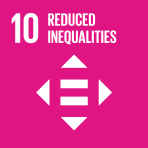Abstract
In recent decades, all regions of the world have seen substantial progress in life expectancy at birth, which was estimated to be at 72.8 years in 2019 compared with 64.2 years three decades ago. As importantly, life expectancy has increased at all ages such that a person at age 65 in 2019 was likely to live 6.2 years longer than in the early 1950s (United Nations, 2022). But life expectancy differs significantly across countries and within them. Inequalities in health and in life expectancy across countries have received attention from the international community, which recognized that such inequalities are unfair and beyond an individual’s control. Assessing country-level inequality in life expectancy is therefore useful to examine whether outcomes in countries with high increases in life expectancy differ by their social and health policies. For instance, reducing inequality in life expectancy across countries points to the role that health policies play in controlling a wide range of diseases responsible for disparities in child and maternal mortality.
- 16 Dec 2022


